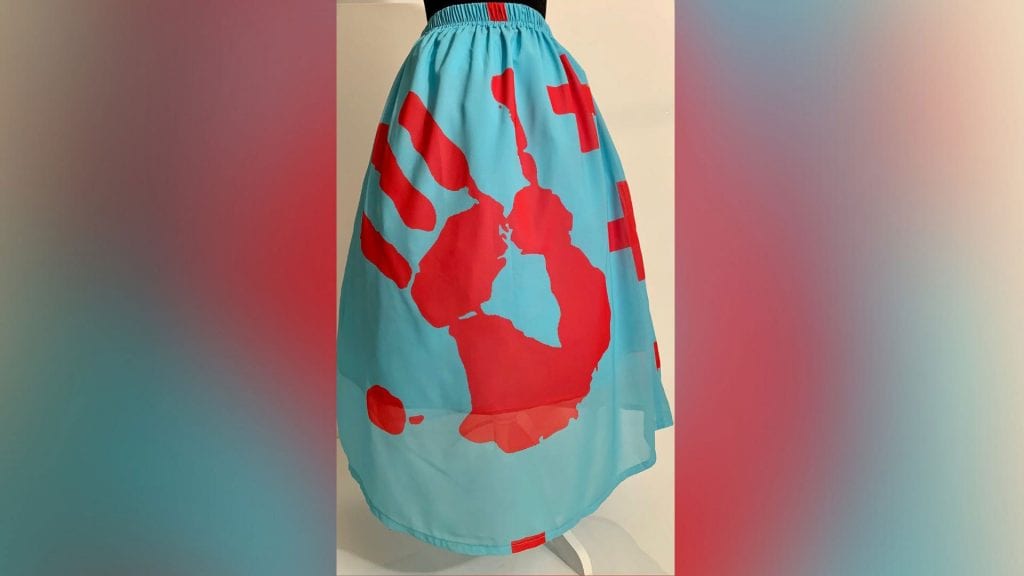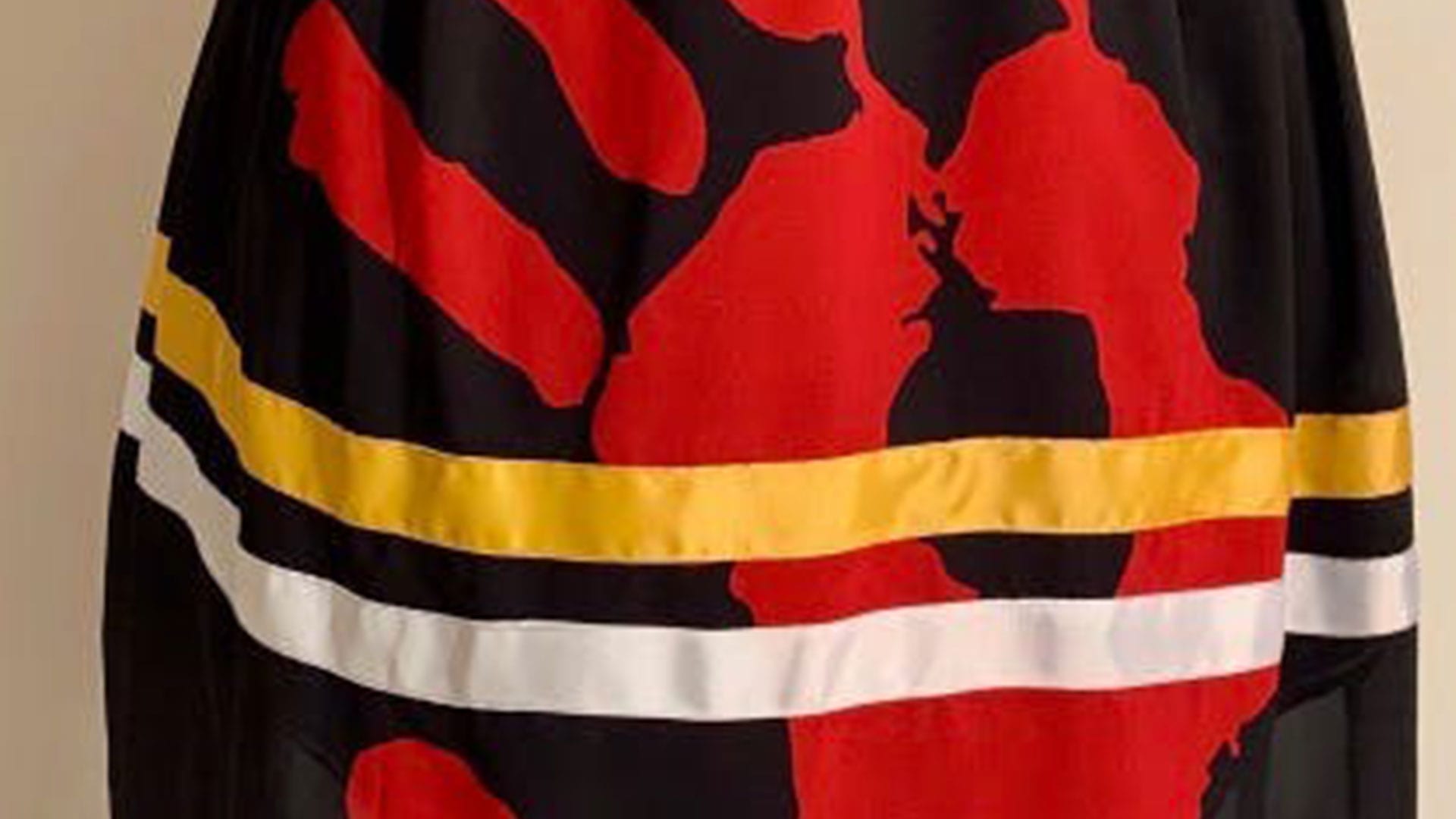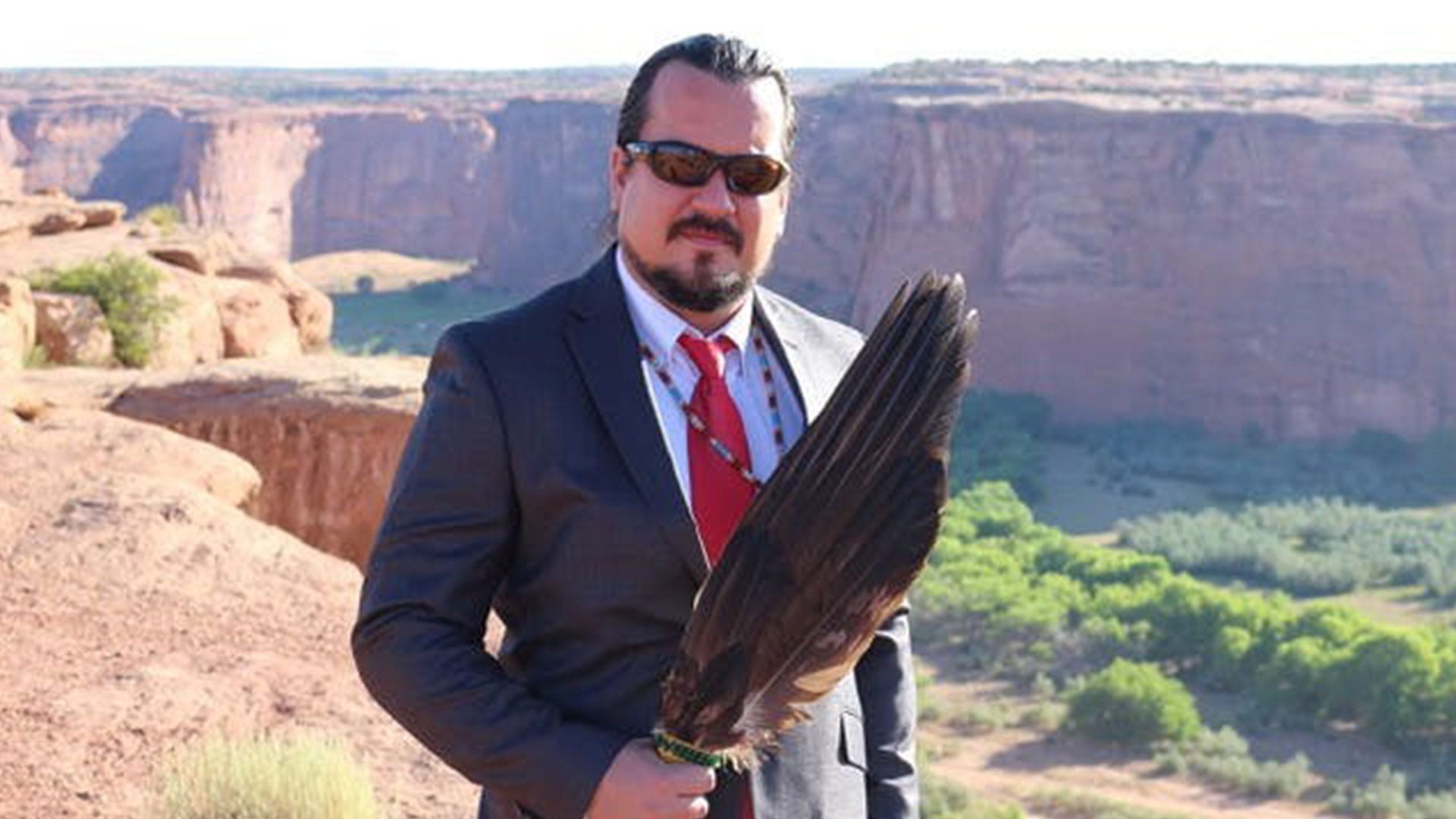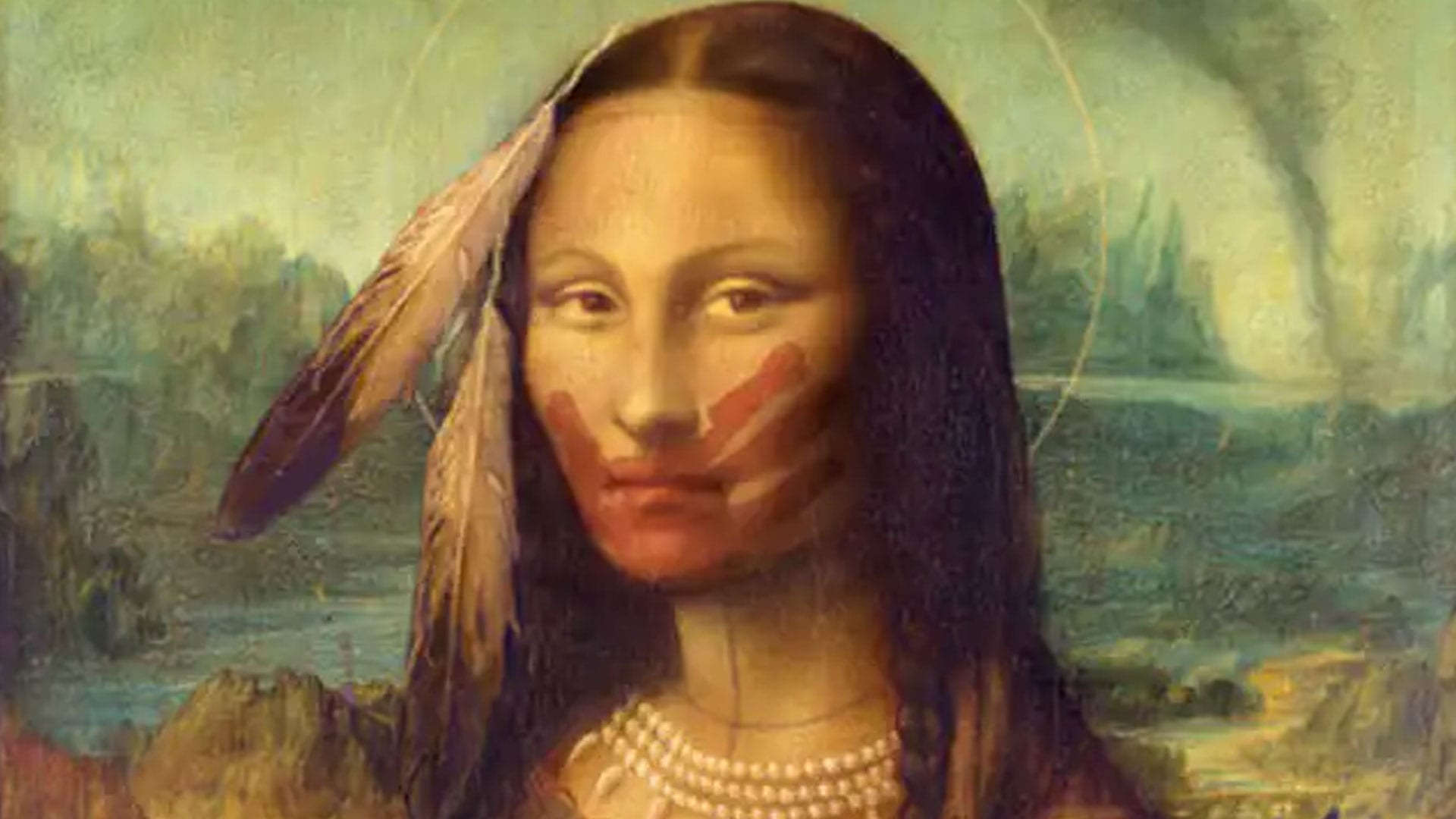
Turquoise skirt with red hand print and crosses, Cerruti Chiffon, inner layer is Poly French Crêpe. From Sky Eagle Collective. (Photo courtesy of designer Dante Biss-Grayson
The powerful image of a red handprint has come to symbolize the Missing Murdered Indigenous Women movement as a way to represent the thousands of women who have been silenced.
Beyond politics and detective work, the handprint has found its way into art and fashion as a way to raise awareness.
One of the more striking creations is a new line from Sky Eagle Collective, designed by Creative Director Dante Biss-Grayson, Osage Nation.
He has made a line of digitally printed chiffon ribbon skirts, fusing modern technology and strong graphic imagery with traditional designs.
What made him want to create a line focused on MMIW?
“It all started when my daughter Ella Sky-Eagle was born,” Biss-Grayson said from his studio in Nevada. “I started my journey into art when I was very young in Santa Fe, New Mexico, where I have taken many awards at the SWAIA Indian Market, and have artwork in private and museum collections.

“After multiple tours overseas, in Iraq, Kuwait, Afghanistan and Italy, I returned home, with many traumatic incidents locked deep inside my heart and soul,” he added. “I needed a release, I needed therapy, so I opened my art and fashion studios. I paint, write poetry, sculpt, create art installations, and I am a fashion designer.”
During the pandemic lockdown, he began to look for more outlets.
“I began to design works that I hope inspire others, give them strength, pride, hope, empowerment, and resilience,” Biss-Grayson said. “This is when the Sky-Eagle Collection was born. The idea is to create awareness for this issue in the hope that action can occur. If I am able to support advocacy groups and get more awareness for this issue via my artwork and fashion, then I am helping, in my own way, to mitigate the issue.”
Made in limited edition batches, the skirts come in red, black, yellow or turquoise, colors that honor the four directions and Native palettes. A large handprint graces the front, while silk ribbons run across the bottom and crosses adorn the sides.
“I have donated many skirts to individuals and advocacy groups to help them on their journeys,” Biss-Grayson said. “Recently, one of the outcomes of this project is ‘The 400 Ribbon Skirt Project.’ The project is to design 400 ribbon skirts and donate all of these to battered women’s shelters on reservations in the U.S and Canada. The idea is to create medicine bundles with skirts and the hope is that these bundles give good medicine to the recipient.”
He started the design after researching and learning more about the MMIW epidemic.
“The red hand is a very powerful image, and in my tribe, we have used this symbol in our ribbon work and blankets. The connection of MMIW and the red hand has a connection to the spirit, and I try to convey this strength in my designs,” he said.

The impact and reaction has been immediate.
“Many collectors have emailed me and talked to me, and said my ribbon skirts bring them hope and are good medicine for them,” Biss-Grayson explains. “Many of whom were directly impacted by MMIW, and victims themselves. The goal of Sky-Eagle Collection is to bring greater awareness to this issue and hopefully develop action.
Biss-Grayson said he has donated to nonprofit groups like the National Indigenous Women’s Resource Center, the Sovereign Bodies Institute, and NOISE, and to individuals who were in dire financial straits.
“I hope to further support these efforts in the hopes that further legislation can be developed to mitigate the impact of MMIW issues, community capabilities established via awareness campaigns, inspire communities to act, and support groups who organize and march to bring awareness and action,” he said. “At last glance, my social media posts reached over 1 million viewers in 2020, so hopefully along the way I have brought the MMIW epidemic to the forefront, educated, and hopefully inspired another to pass it on, and be the change, and bring action.”

Lehi Sanchez, who goes by the name Lehi Thunder Voice Eagle, has become a strong advocate for supporting Native issues through art and design.
His father, Totonac from Mexico and his mother, from the Navajo Nation, live in Arizona and provide wilderness therapy for at-risk youth through the ANASAZI Foundation, which Sanchez’s father co-founded in 1988.
Until Sanchez decided to pursue art fulltime in 2014, he often assisted his parents in their work, he has now become known for his reclaimed hats that feature recycled leather, sage bundles and crystals, as well as handmade masks with striking geometric Native designs that benefit mutual aid charities.
Complementary to his fashion line, Sanchez’s artwork takes some of the world’s most recognizable images from great classical artists and reimagines them with activism — an ode to his people’s past and future.
He said his process is about “shifting the storyline through representation. It is a way that allows the viewer access to a history they are comfortable with, then the challenge of shifting their focus to a history that many have attempted to disregard and hide.”

In “Creators Promise” he has remade Leonardo Da Vinci’s Mona Lisa with braided hair, eagle feathers tied in, while thin tattoos encircle her wrists.
The word HOPE is inked on the fingers of her left hand, while MMIW adorns her right.
The most powerful element is the red hand painted across her mouth and face like a giant slash, the universal symbol for the thousands of women gone silent. Mona’s serene pose but defiant body adornments refuse to back down, her symbols speak volumes.
Sandra Hale Schulman, Cherokee, has been writing about Native issues since 1994. She is an author of four books, has contributed to shows at the Smithsonian’s National Museum of the American Indian, The Grammy Museum, The Queens Museum, and has produced three films on Native musicians. Special to Indian Country Today











